There is an entire world waiting to be discovered beneath the deep, blue sea. Much of what is hidden beneath the ocean remains a mystery, but fortunately, underwater scuba diving explorations have brought some of these mysteries to light. Now it is possible for curious adventurers to swim beneath the waves, and witness marine life firsthand in a beautiful and mostly uninterrupted state.
Expert tip: Combine your Caribbean holiday with your scuba diving certification and stay at one of the 15 award-winning Sandals all-inclusive resorts. Get certified and dive the rest of your stay for free!
All it takes to do this is gaining a PADI® certification. This is important in order to learn all the technical aspects of diving, as well as how to do it safely. Once you’re certified you’ll be able to explore some of the most magical dive sites in the world, including reef explorations in places like Australia, Hawaii, and the Caribbean.
In this article on the Sandals Blog:
Preparing for your PADI® certification
Material that’s covered by your PADI® certification course
How PADI® certification courses work at Sandals Resorts
Completing your PADI® certification on the resort
Completing your PADI® certification with eLearning
The best Sandals resorts for scuba diving
FAQs about PADI® certifications at Sandals
Sandals and Beaches are the top choices for all-inclusive scuba diving resorts. All resorts are PADI-certified learning and certification centres! With state-of-the-art Newton Dive Boats, a PADI® Certified staff, and unparalleled dive locations nearby, Sandals has been voted one of the Top 5 Dive Operations in the Western Hemisphere by PADI®.
With seven Sandals destinations to choose from, you’re guaranteed to be close to some of the best scuba diving sites in the Caribbean no matter which resort you choose. Plus, all the dive equipment you need and up to two tanks a day is included for PADI-certified divers!
Expert tip: If you’re not quite ready to do a full diving certification course, but want to dive on holiday at Sandals, you can take the PADI® Discover Scuba Diving course (only $120 USD or £104 GBP) and be ready to dive in just a few hours! No prior certification or dive experience is necessary to complete this 3-hour course, and it’s valid at the resort for two weeks.
For your safety, you will be required to fill out a medical form prior to being able to go on any dives. If you have certain medical conditions, you will also be required to get a signed (and possibly notarised) letter from your doctor. This will be checked for authenticity.
Many certification centres, such as Sandals, will allow you to expedite your learning by going online and starting your course before you arrive. Even if you do not plan to get the classwork portion of the course out of the way prior to your arrival, it is important to secure your spot early because space on boats is limited. You can book your certification course before you travel at Sandals by calling 1-888-SANDALS or purchasing your holiday extras online.
Did you know? Sandals and Beaches Resorts cover 224 of the best dive sites in the Caribbean. Before you travel, you can check out tons of great scuba diving sites that you may see while diving at your resort.
Knowing about the equipment that keeps you safe makes a world of a difference while you’re underwater. Make every effort to pay attention during your training course to instructions on how to assemble your gear, and what goes where. Here are some of the basic things you’ll need to be familiar with:
• Wet Suit or Dry Suit – Typically made of neoprene rubber, you’ll find most divers wearing short or long versions of these, depending on where they’re diving.
• Regulator – Serves as a converter of high-pressure air into ambient pressure, which makes it possible to breathe the air from your tank.
• Purge Valve – Facilitates the clearing of masks and regulators without having to remove either.
• Scuba Tank / Cylinder – Made out of steel or aluminum, this holds all the air you’ll need for the dive and is connected to the regulator.
• Full or Half Foot Fins – Their primary purpose is to help you control your movement underwater. Fins help you navigate more quickly underwater.
• Diving Mask – A diving mask protects your eyes from the salt water, and helps you to see everything clearly. An ill-fitting mask can really put a damper on your experience, not to mention make it harder to keep water out.
• Scuba Gloves – Not everyone wears these, but they can help keep your hands warm and protected, depending on the length and depth of your dive.
• Weight Belts & Pockets – These more or less help counteract or balance off the buoyancy of diving equipment, like tanks and other equipment.
• Defogger – You can invest in a defogger solution to prevent your mask from fogging up while underwater, or you can just use baby shampoo, which in most cases, works just as well.
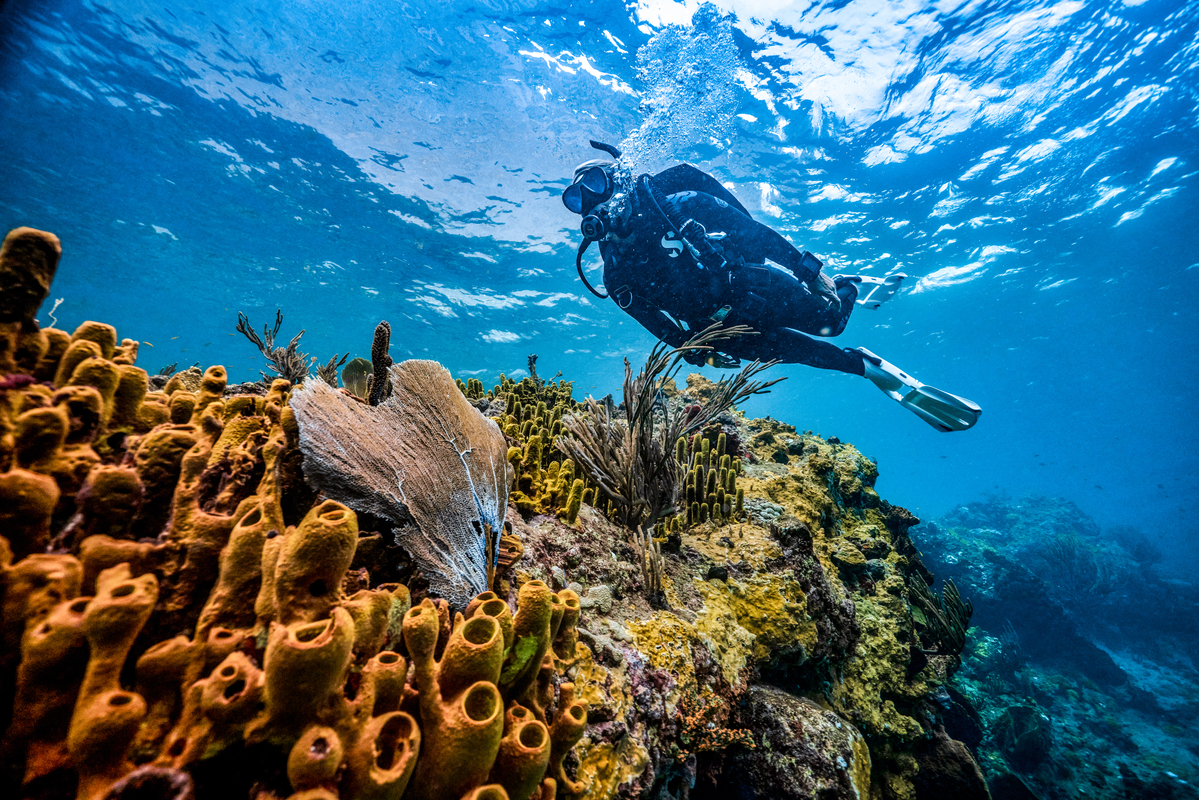
BWRAF (“Begin with Review and Friend”), or:
• B – Buoyancy – The Buoyancy Control Device (BCD) is a jacket worn over the wetsuit. It is a vital part of diving wear, as it is connected to your tank and all the associated equipment. During the buoyancy check, make sure that you and your partner check the inflator button, and deflate valves.
• W – Weight – Weights are important while scuba diving and help you to maintain the correct depth. As part of the BWRAF buddy check, you’ll want to ensure that both you and your scuba buddy’s weights are secured, and locked into place. E.g. weight belts, and weight pockets.
• R – Releases – Learn how to open/close the various releases on you and your buddy’s wetsuits. Check tank straps, shoulder and chest straps, etc.
• A – Air – Check regulators, cylinder value (to ensure it's open), air monitoring device, and even the taste of the air at this point. Check alternative air sources, and be sure you and your buddy know where to locate yours, and theirs.
• F – Final Check – This is where you cross your T’s, and dot your I’s. Check all gear, including mask, snorkel, fins, dive light, etc.), and be sure to secure loose hoses and other objects.
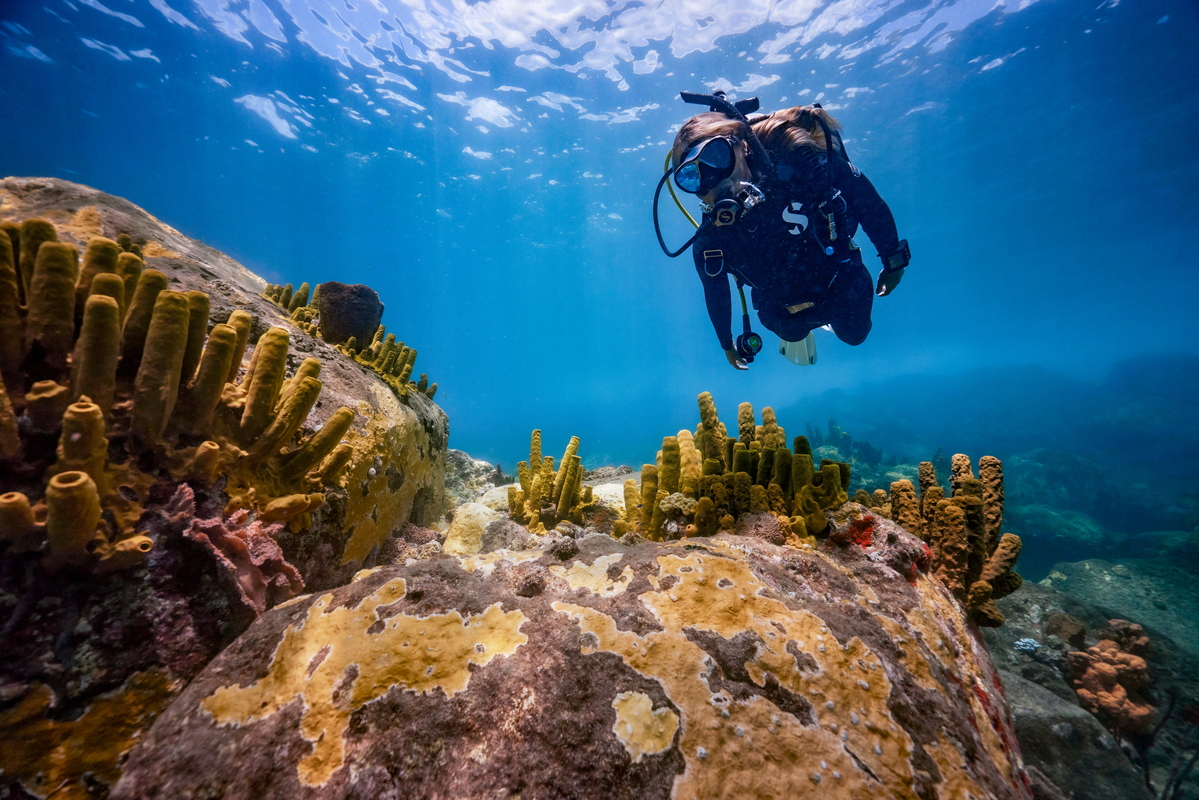
You'll lay face down on the bottom, keeping your legs as straight as you can. Take deep, paced breaths, and then add little bursts of air into your BCD – this helps to develop natural buoyancy. As you continue the exercise, you will gradually increase your buoyancy.
The inflatable tube is usually located in the VC pocket or attached to another part of your equipment. You'll get familiar with this beforehand. To inflate it, you’ll first need to unroll and flatten the air tube on the water’s surface. You can use your air source to inflate the tube. To do this, you’ll hold the open end of the tube beneath the surface and insert your mouthpiece into the opening. Press and hold down the purge button until the tube is fully inflated, and stands upright. Keep holding the open end under the water to prevent the air from getting out.
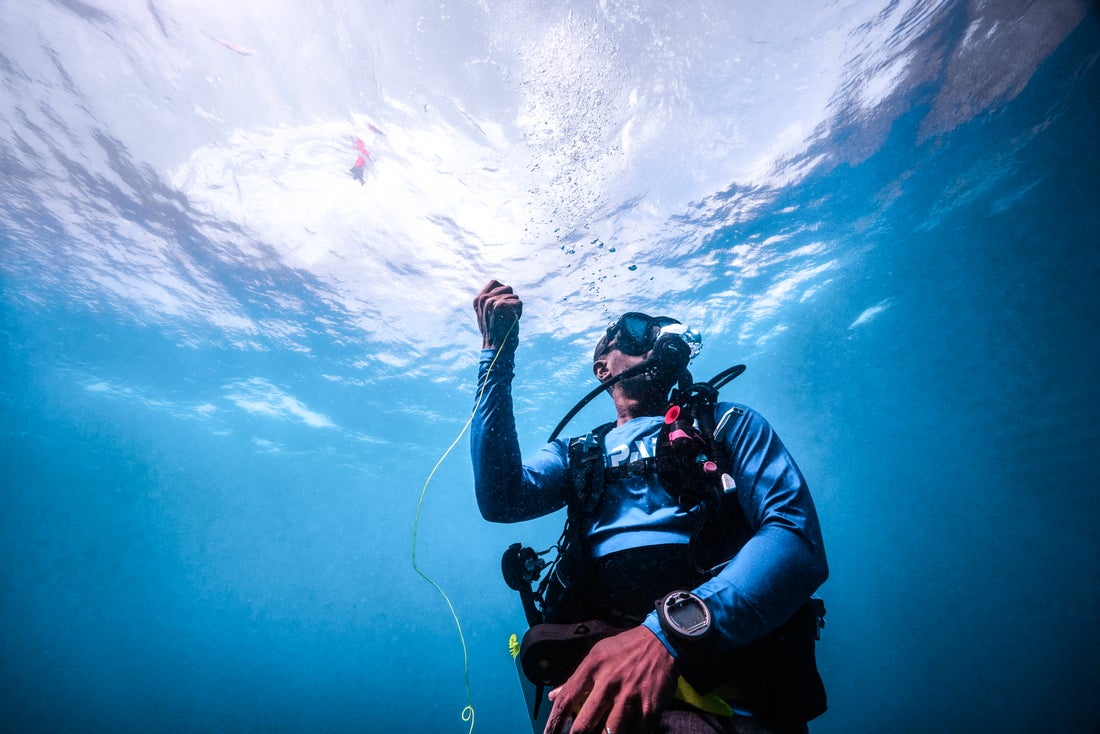
It’s rare that you’ll have to do this, but handy in the case of an emergency where you’re required to help someone make their way back to the boat. Learning how to do this is normally a part of your practice pool or open-water dive.
There are various types of tired diver tow methods, including the tank valve tow, do-si-do tow, and push tow. The tank dive tow as the name suggests requires that you pull your dive buddy’s tank valve while swimming on your side or back. Intertwine your arms into your diving partners as you swim on your side for the do-si-do tow, while the push tow requires that you put your partner’s fins on your shoulders, and navigate the waters by swimming on your stomach.
You will also learn how to use a depth chart, which more or less lets you calculate how long you can safely stay underwater on a dive at specific depths.
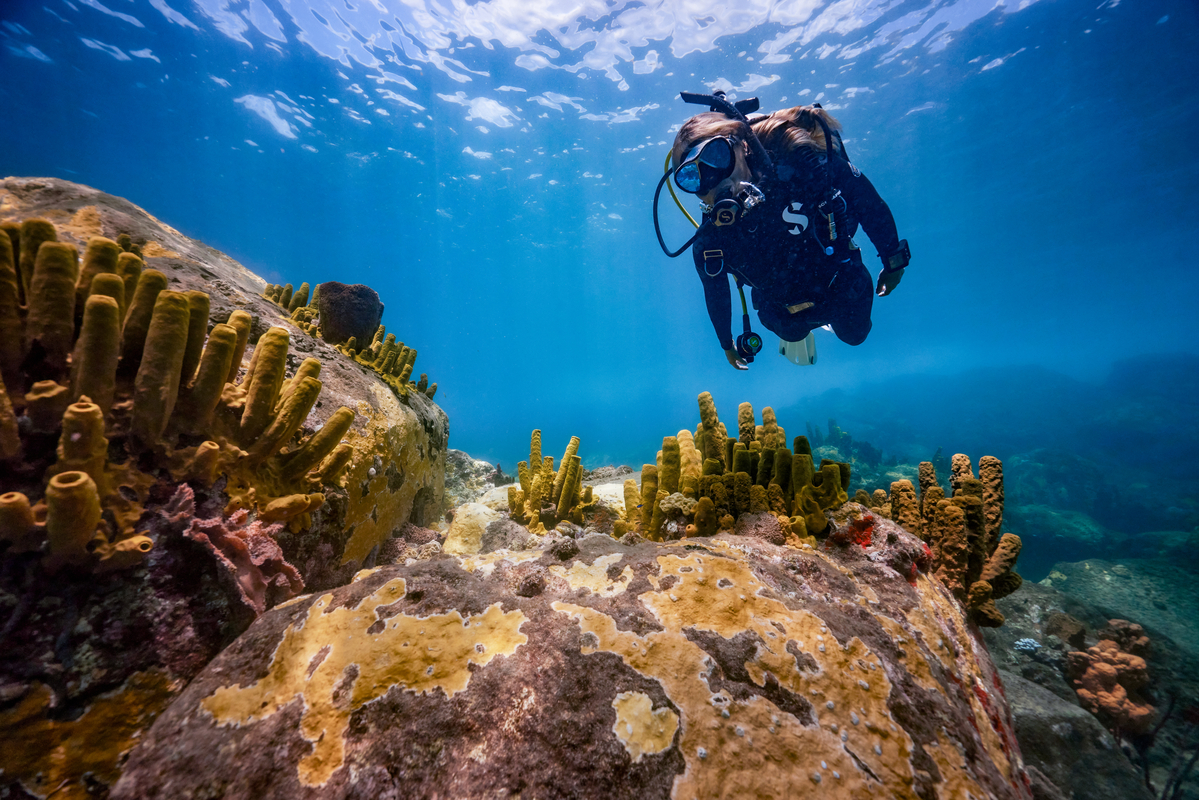
The timeframe and exact makeup of your PADI® certification course at Sandals depends on a number of factors including your time of arrival, the type of certification being pursued, individual capability, and whether or not you did any of the coursework beforehand by enrolling in the PADI® eLearning programme. It’s possible to complete a PADI® certification in as little as 48 hours, but you should always proceed at a pace that’s comfortable for you.
Expert tip: The first thing you’ll want to do when you arrive at Sandals for your scuba diving holiday is to check in at the Dive Shop!
Starting from about 9 am, your training session will begin, likely with a training video. You can expect to receive all your course material on that day, so you can follow along and do study prep. If you are part of a group, you will collectively watch the training video, which is about 20 minutes long.
Ideally, you’ll have two opportunities for practice while in the water before your big dive. One of these will happen in the pool, and the other in the ocean. The pool dive session spans for around three hours, and will happen before the ocean dive, which usually happens the next day. You can expect a range of pool floor exercises.
The main purpose of the pool training is to get you comfortable in the water, and with your equipment. You will undergo confined water skills training, which includes learning key skills like alternating between your snorkel and regulator on the surface and clearing your regulator.
As part of your training you will learn how to rid your mask of water underwater, something that may sound impossible, but is actually one of those things that comes in very handy, and is easy to do. You’ll also learn underwater signals, and undertake air depletion exercises, both of which help you to feel in control and prepared for anything while underwater.
Part of the training is learning how to assemble your equipment, equipping/un-equipping your weight belt underwater, inflating/deflating your BCD, and learning how to breathe using a free-flowing regulator in the event that you encounter issues with your regulator while diving.
Skills like relieving pesky underwater leg cramps will also be in focus, as this is one of the things that can negatively affect your diving experience. To do this you can use a stretching technique where you hold the end of your fin, bring it in towards you, and straighten your leg.
Getting through approximately 5 chapters (about 70 pages) as part of the theory component of your certification process is mandatory and will help you complete the review quiz at the end of the course. Depending on how fast you can read (and how well you’re able to retain information), you may well be able to complete this in one day. It helps to get it out of the way as early as possible, in preparation for the actual exam the next day.
Expert tip: You’ll find chapter reviews at the end of each chapter, and various practice quizzes that you can review with your instructor.
This is where your studying will pay off; you’ll be required to complete 3 sections of about 10 questions each as part of your exam. In order to be granted scuba certification, you’ll need to make a passing grade. Be sure to pass the exam before, or after your practice dives to gain certification!
Making it to this step means that you’ve successfully acquired your scuba certification. Congratulations! You’re now just about set to head out on your first real dive. Hopefully, you’ve already planned this out with your tour operator or resort. If you haven’t, now is a good time to do so.
Quite a number of resorts have only one dive boat, so try to schedule your dive upfront. Be on time and ready when the day comes.
In most cases, your first dive will be a two-tank trip, which means that you will go out on the boat and embark on two separate dives, likely with a break in between. Most trips leave early, from about 8:30 - 9 am. Depending on whether you’re on a private tour, or with a group, you can expect to return between 12 pm and 1 pm.

You can rest easy for the duration of your stay, or go dive some more.
We’re pretty sure you’re going to take full advantage of your new certified diver status, and who can blame you, especially considering dives are absolutely free for guests of Sandals Resorts once you’re certified.
Good to know: It is not advisable that you go diving on the day that you’re leaving the island as you may be at risk of Decompression Sickness (DCS). Most experts recommend that you take your last dive a minimum of 18-24 hours before flying.
Many people choose to get PADI® certified while on holiday, but the certification process can be time-consuming. Getting started with your PADI® certification before your holiday will allow you to spend less time learning and more time enjoying your stay. Online learning is optional as all components of the certification can be completed at the resort, but it can still be worthwhile if you want to dive as soon as possible.
Getting your scuba training on the fast track by starting the course prior to your arrival is very possible with Sandals. This means you get more time to relax, enjoy your holiday, and explore as many scuba sites as you desire. To take the fast-tracked route, you’ll simply need to sign up for the PADI® e-learning certification.
Once you’ve signed up, you can get ready for the written exam by watching the videos and doing the required reading. You can also do additional reading to get you ready for the practical training that you will still need to undergo once you arrive at your destination.
After you’ve completed your pool and open-water dive, you’re free to explore life beneath the waves!
Video created by ScubaNation. @scubanationtv
For scuba newbies, the decision to dive can be both exciting and scary. It helps to have knowledgeable guides and to know what to expect before you dive.
As far as scuba diving goes, guides will usually give you a heads-up about what sights you may witness on your dive. For example, at Fish Reef in the Bahamas (Exumas), you’re likely to come face to face with white grunts, yellowtail snappers, blue parrotfish, and squirrel fish during a scuba exploration. While at Gallery Reef in Jamaica (Negril), you’re likely to see large crabs, turtles, sea horses, moray eels, sting rays, and nurse sharks.
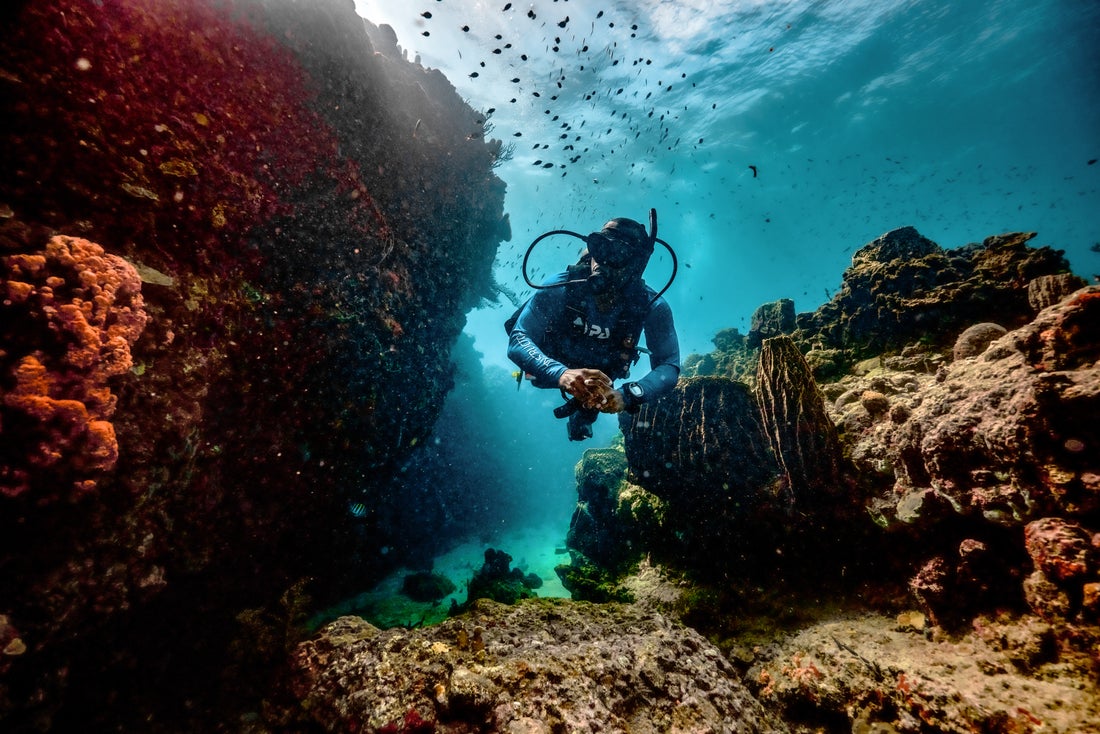
Dive guides can tell you with some degree of certainty what you can expect to see by taking into account tradition, patterns, and climate. The experiences of other recreational and professional divers in specific areas also come into play here – if sightings of sea turtles have been reported in a particular area by every other diver who goes scuba diving there, it is likely that you will witness these too.
Predictions like these make it easier to choose where you’d like to dive, once you’re PADI® certified, based on what you hope to experience. It must be said though, that even with the most solid predictions, there are the odd days when you may see what you expected. This is one of the reasons people get hooked on scuba – because it is always full of surprises!
Video created by ScubaNation. @scubanationtv
Good to know: At the end of each amazing dive, you and your group will do a "controlled safety stop" This happens at about 15 feet below the water’s surface. It spans for about three minutes and is important in order to allow any built-up nitrogen within your body to be released.
There are various levels of PADI® certification, from PADI® Scuba Diver or Junior PADI® Scuba Diver to Teacher of Teachers: Course Director.
For your holiday, however, just getting to the first PADI® certified level should suffice. For the more ambitious, you can opt to get certified as an Open Water Diver (OWD) or Advanced Open Water Diver (AOWD), both still on the recreational levels. Having these certifications opens additional possibilities for dive sites, but it is highly recommended that people seeking advanced levels of certification factor that in while planning the duration of their trip.
There are also specialty levels like Rescue Diver, and Dive Master Certifications that expand your diving horizons even further!

Scuba diving can be costly, but guests of Sandals don’t have to think too much about this as scuba diving is part of the all-inclusive holiday package. Once you’ve attained your PADI® certification, the rest of your dives are free. This is good news especially, for repeat visitors who wish to travel to a wide range of properties to have new experiences with scuba diving all around the Caribbean. Once you’re certified, you won’t need any additional training to dive at any of the Sandals properties.
The best Sandals resorts for scuba diving include Sandals Royal Bahamian in Nassau, which is a great place to spot sharks. Sandals Grenada has an abundance of shipwrecks off the coast, as do the **Sandals resorts in Barbados** and the resort in Curaçao. Also consider Saint Lucia, which has some amazing coral reefs. Other great scuba diving locations include the Sandals resorts in Exuma, Jamaica and Antigua.
You can't go wrong with Sandals when looking for a great place to scuba dive in the Caribbean!

Scuba certification starts with the Junior PADI® Scuba Diver certification, which is open to children as young as 10 years old. As long as you’re healthy, fit, and/or have the ‘okay’ from your doctor, you’re free to start your PADI® certification process.
Over 100,000 guests have been certified at Sandals/ Beaches resorts over the years. The training courses at all Sandals and Beaches branded properties are taught by PADI® certified professionals, so you can be sure that you’re receiving the best instructor training available.
Sandals guests can get PADI® certified for about £389 / $450 USD per person and dive for the rest of their stay for free! The following is included:
• Materials
• Equipment
• Lessons
• Practise dives
• Boat rides
Anyone from 10 years of age can get scuba certified. Younger scuba divers will need to acquire a Junior PADI® Scuba Diver certification. All Sandals resorts are adults-only resorts and therefore don't accommodate children. Couples with kids can scuba dive at one of the family-friendly Beaches resorts (includes a scuba diving programme for kids!).
The main difference between certified Scuba Divers and Open Water Divers (OWD) is the maximum depth they can dive. OWDs can embark on dives with a certified partner or another professional diver to a maximum depth of 18 meters/60 feet, while certified Scuba Divers can only dive under the direct supervision of a PADI® professional to a max. depth of 12 meters /40 feet.
People who get Open Water certified do it for the flexibility that the upgrade of certification affords when compared to a regular recreational scuba diver, who must dive only under the supervision of a PADI® professional. Getting Open Water certified broadens the scope of diving locations available to you.
Some health conditions may require further clearance from your doctor before going scuba diving. These include asthma, diabetes, heart disease, and hypertension. Being able to dive with any of these conditions depends on whether the condition is chronic, being managed by medication, and whether you have your doctor’s approval.
Overall, safety is a priority when scuba diving and all precautions should be taken to avoid mishaps or compromising your health. In most cases, when signing up for scuba diving excursions, you will be required to sign a disclaimer/medical waiver. Some companies verify that the facts you’ve provided are correct before proceeding with the dive depending on your answers. This is done for your own safety.
So there you have it, all of the steps you need to get PADI® certified at Sandals Resorts. With some determination and enthusiasm, you too can explore the ocean as a certified diver.
Take note that once you have your Open Water Diver certification, a whole list of more advanced certification opportunities arises, each with its own exciting experiences and new things to learn! Be sure to dive with Sandals on your next holiday, and you will see why so many guests have chosen us as the dive centre that they keep coming back to, for the best scuba diving experiences in the Caribbean!
Video created by ScubaNation. @scubanationtv